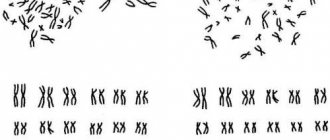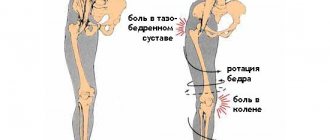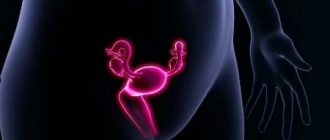Many, not even suspecting the existence of such a disease, do not know how to describe the sensations that bother their legs. When the whole body wants to rest and the body is tired, the legs begin to behave in an unusual way and encourage the person to move them. After the muscles tense, the discomfort goes away, but not for long.
RLS is defined as a sensorimotor disorder accompanied by discomfort and even pain in the legs. It appears at rest, in the evening or at night. A person has to strain the muscles of the lower extremities and move them so that the unpleasant sensations stop. As a result, rest is disrupted and frequent insomnia occurs. It becomes very difficult to fall asleep at night, and you feel tired and irritable. The pathology is also commonly called Ekbom syndrome. Doctors do not consider it one of the most common, but it can affect a person at almost any age. Mostly after 10 years, and the peak comes closer to 50 years.
What is restless legs syndrome (RLS)?
Restless legs syndrome (RLS) is a neurological disorder characterized by uncomfortable sensations in the legs that interfere with rest and sleep. Experts believe that low iron levels in the brain are at least partly responsible for RLS. Dopamine imbalance is also thought to contribute. Approximately 60% of people with restless legs have a relative with the condition, suggesting a genetic component to the syndrome.
Restless Legs Syndrome: Is It Real?
Research shows that 1 in 10 people suffer from restless leg syndrome, but finding help and support is not always easy. Many people with RLS never receive proper treatment. Part of the problem is that the syndrome is difficult to explain and is often labeled as “just nervousness.” People who have never experienced symptoms that lead to extreme stress often do not understand how seriously the syndrome affects their quality of life. Even doctors do not take the syndrome seriously, do not recognize the symptoms and do not prescribe drug treatment.
The good news is that recent research has increased our understanding of restless legs syndrome, allowing for more effective treatment. At the same time, RLS is being recognized more and more often. If you or your partner suffers from restless legs, now is the best time to find relief.
A night in the life of a person with RLS
If you have restless legs syndrome, a typical night looks like this: You lie in bed, ready to fall asleep, and just as you begin to relax, you feel a tingling, itching, or tightness in your legs. You try to ignore the uncomfortable sensation, hoping it will go away, but eventually the impulse to move your legs arises. You get out of bed, stretch, and it becomes easier for you. But when you lie down again, the disturbing sensations in your legs reappear.
Signs of RLS
Those who have felt what restless legs are like want to start treatment as quickly as possible, and for this you need to explain to the doctor what exactly is bothering you. But it can be difficult. Some describe goosebumps, others describe a burning sensation. For others, RLS manifests itself as tingling or pain.
But there is one unifying factor - discomfort, which forces you to get out of bed. Sometimes symptoms appear before bedtime, usually signs of the disease are felt in the area of the lower leg, thigh or feet.
Discomfort increases when a person is calm, and the manifestation decreases as soon as he begins to move. In the evening and at night, RLS intensifies, and during the day it is almost impossible to detect it, because there are no tests or analyzes that could indicate the reliable presence of the disease.
When it turns out that the patient has restless legs syndrome, treatment is prescribed on an individual basis.
You can detect Ekbom syndrome yourself. When falling asleep, the legs begin to move spontaneously at intervals of 5-40 seconds. Symptoms appear on one or both limbs, on individual parts (foot, fingers, knees, etc.) or throughout the entire leg.
You should consult a doctor if you notice signs of restless legs syndrome; treatment based on your own guesses is highly not recommended.
Signs and symptoms of restless legs syndrome
The signs and symptoms of restless legs syndrome vary from person to person and are often difficult to describe. Common descriptions include: a feeling of "legs being pulled", tingling, itching, burning, painful sensations. Some say it feels like bugs are crawling under the skin of your legs, like soda bubbles are escaping through your veins, or like “the bones deep inside are itching.” Some symptoms are painful, but most often they are just uncomfortable and disturbing.
Common signs and symptoms of RLS
- Discomfort in the legs along with a strong urge to move the legs
. Uncomfortable sensations deep inside the legs, accompanied by a strong impulse, which one often cannot resist, to move the legs. - Rest leads to symptoms
. Uncomfortable sensations in your legs begin or get worse when you sit, lie down, or try to relax. - Symptoms worsen at night
. RLS usually flares up at night. In more severe cases, symptoms begin during the day but become more severe at night. - Symptoms improve when you walk or move your legs
. The relief increases the more you move. - Jerking and kicking of legs during sleep
. Many people with RLS also frequently experience periodic limb twitch disorder (PLTD), which involves repetitive jerking movements of the legs during sleep. - Symptoms of RLS range from mild - annoying - to severe - disabling
. You may experience symptoms only occasionally, when you are under stress, for example, or every night. In severe cases of RLS, you experience symptoms in your arms as well as your legs.
Self-help for RLS: three tips for managing symptoms
There are many things you can do to help manage restless leg syndrome on your own. In fact, mild forms of RLS can often be cured with lifestyle changes alone. Here are our three tips:
- Avoid RLS triggers;
- Exercise every day;
- Work on improving your sleep.
Walking to Sleep: The Tricks of Restless Legs
As a rule, for most sufferers, unpleasant symptoms occur at least once a week, for some - more than twice a week. Restless legs syndrome has a clearly defined circadian rhythm, appearing and intensifying in the evening and night hours. The peak activity of the limbs occurs from 0 to 4 hours, gradually fading towards the morning. It turns out that instead of sleeping, a person is forced to walk around the apartment, stretching, bending, shaking or rubbing his itchy feet. During movement, the unpleasant sensations decrease or disappear, but as soon as a person goes back to bed, and sometimes even just stops, the legs again give no rest.
Often the disease begins with the first symptoms making themselves felt 15-30 minutes after the person goes to bed. If the disease progresses, discomfort in the legs may appear not only at night, but also during the day. In severe cases of restless legs syndrome, the time of day does not play a role. Legs require attention constantly and in a sitting position too. In such a state, people literally cannot find a place for themselves. Ordinary trips to the theater, cinema, visiting, flying on an airplane and driving a car become impossible. All this affects the emotional state; often people with restless legs syndrome suffer from severe depression.
The insidiousness of this disorder is that at the appointment, the doctor, as a rule, does not find any manifestations of the disease: the symptoms are not visible, but only felt by the person himself. It is not always possible for a specialist to make a correct diagnosis, because there are simply no special laboratory tests or studies that could confirm the presence of restless legs syndrome. To date, no specific nervous system disorders characteristic of this disorder have been identified. Often unpleasant sensations are associated with disease of the joints or veins.
To make a correct diagnosis, it is very important to tell the neurologist in detail and accurately about your sensations, their regularity and intensity. To help the doctor and the patient, not so long ago an international group studying restless legs syndrome developed the main criteria by which one can determine whether a person has this disease:
- the need to move the legs is associated with the presence of unpleasant sensations in the limbs;
- the need to move the legs manifests itself at rest, in a lying or sitting position;
- movement weakens or relieves discomfort in the legs;
- the desire to move the legs occurs in the evening and at night; during the day there are either no manifestations or only minor ones.
Using polysomnography, based on the number of periodic leg movements during sleep (this is typical for patients with restless legs syndrome), the severity of the disease can be determined:
- mild degree - 5-20 movements per hour
- medium level – 20 – 60 movements per hour
- severe - more than 60 movements per hour
It would not hurt to take a general blood test, as well as blood tests for iron, vitamin B12, folic acid, and glucose levels, since, as already noted, restless legs syndrome may be a consequence of an underlying disease.
Avoid syndrome triggers
Avoiding anything that you know triggers restless leg symptoms is a smart first step to overcoming the problem.
- Manage your stress
. RLS symptoms worsen when you feel anxious and overwhelmed. Do whatever you can to help keep stress under control, including using relaxation techniques such as meditation and deep breathing. - Cut down on alcohol or give it up completely
. Alcohol is also known to worsen the symptoms of restless legs, so be careful when drinking alcohol, especially in the evening and at night. Alcohol disrupts sleep, making you more likely to wake up in the middle of the night and experience RLS symptoms. - Do not overdo it
. Strenuous workouts can sometimes make RLS symptoms worse, especially when it's time to go to bed. So be wise about your training intensity. It's also smart to avoid sudden changes in activity levels. - Quit smoking
. Nicotine is a stimulant that impairs blood flow to the muscles and worsens the symptoms of restless leg syndrome, so the best thing to do is quit smoking and give up vaporizers and e-cigarettes. - Experiment with caffeine
. For some people, caffeine is a trigger. However, recent research suggests that it may be beneficial for some people. To understand which category of people you fall into, try cutting back on coffee, tea and sodas and then see how it affects your symptoms.
Check with your doctor
There are many common medications—both prescription and over-the-counter—that trigger and even worsen RLS symptoms. Medications to watch out for:
- Over-the-counter sleeping pills
- Cold and allergy medications that contain an antihistamine (such as Bendadryl, Nyquil, and DimeTap)
- Anti-nausea medications (such as Antivert, Compazine, and Dramamine)
- Calcium channel blockers (used for high blood pressure, migraines and heart problems)
- Antidepressants (such as Prozac, Effexor, and Lexapro)
- Antipsychotic drugs (used for bipolar disorder and schizophrenia)
Get tested for iron and vitamin deficiencies
Deficiencies of certain vitamins and minerals have been linked to restless legs syndrome.
- Iron
. Iron deficiency (anemia) is a well-known cause of RLS, so ask your doctor if you need to be tested. However, iron supplements improve RLS symptoms in people who are not anemic. - Magnesium
. Magnesium improves sleep, and some studies show it has benefits for restless leg syndrome. Try experimenting with magnesium supplements (250-500 mg) before bed to see how it affects your symptoms. - Vitamin
D. Recent research shows that RLS symptoms are more common and more severe in people who are deficient in vitamin D. Your doctor can easily determine your vitamin D levels. Or you may simply need to spend more time in the sun. - Folate (folic acid)
. Folate deficiency is associated with RLS, which explains why restless legs syndrome is so common in pregnant women (folate plays a key role in healthy fetal development). When folic acid is low, vitamin B12 also drops, so try taking a B vitamin supplement.
Train every day
Daily physical activity, including aerobic and resistance exercise, significantly reduces the symptoms of restless legs syndrome in most people. Choose an activity that you enjoy and try to exercise for at least 30 minutes every day, but don't do it in the evening.
Training should not be too intense. A simple activity like walking will provide all the benefits you need. In fact, high-intensity training—training for a marathon—sometimes has the opposite effect and worsens symptoms.
Stretching for RLS
Simple stretching can help stop the symptoms of restless leg syndrome. Here are some tips to get you started:
- Stretching the calf muscles
. Place your palms against the wall, elbows straight. Bend your right leg slightly at the knee and move your left leg back a step or two; The front leg should be positioned so that the knee and foot are at the same level. Wait 20-30 seconds. Now bend your right leg up and down, making sure that your right knee remains level with your foot. Then change legs. - Front thigh stretch
. Stand parallel to the wall for balance, grab your ankle and press it towards your buttock. The other leg should be straight. Wait 20-30 seconds. - Hip stretch
.Place a chair against a wall for support and face the chair. Raise your left leg and place it straight, bending the knee, on the chair. (Or try placing your foot on a ladder, holding onto the railing for balance.) Keeping your back as straight as possible, press your pelvis forward until you feel a stretch in your upper thigh. The pelvis will move forward only a little. Wait 20-30 seconds.
Treating restless legs with yoga
According to a study published in the Journal of Alternative and Complementary Medicine, women with RLS who practiced yoga experienced reduced symptoms and experienced less stress, a better mood, and better sleep habits.
Pregnancy as a cause of RLS
Restless legs syndrome during pregnancy is by no means a rare phenomenon. In women giving birth, the risk of developing RLS is 3 times greater than in other women, although, as we have already found out, they suffer from the disease 2 times more often than men. That is, the risk of pathology in such women is extremely high. However, not all women in labor get sick. Why? Restless legs syndrome in pregnant women is more often observed in people with toxicosis, when beneficial microelements are washed out of the body in large quantities with vomit. In second place among the reasons is hormonal changes that prepare a woman’s body for the birth of a baby. And if a woman in labor has concomitant chronic diseases, then RLS can develop in 80% of cases.
Improve your sleep
Restless legs syndrome symptoms make it difficult to sleep. When you're faced with a lack of sleep, you not only feel terrible, but you're also more stressed. Stress and fatigue worsen RLS, leading to a vicious cycle, so it's vital that you do everything you can to sleep in the healthiest way possible.
- Try sleeping with a pillow sandwiched between your legs
. This can prevent the nerves in your legs from being compressed and result in less time spent with RLS symptoms. - Stick to a sleep schedule
. Maintain your natural sleep-wake rhythms by going to bed and waking up at the same time every day (including weekends). - Improve your bedroom's sleep environment
. Make sure your bedroom is dark (no light from electronic devices!), quiet, and cool. - Calm yourself down before bed with relaxing rituals
. Try wrapping yourself in a blanket and lying in bed with a book, listening to soothing music, or taking a hot bath (the warmth is a bonus for restless leg syndrome relief). - Turn off all electronics 1-2 hours before bed
. Blue light from screens (TV, phone, tablet and computer) suppresses sleep-promoting hormones and stimulates the brain.
Keep a sleep quality diary for RLS symptoms
Write down any changes in your diet, lifestyle, sleep habits and activities that somehow help you make a connection between what you did during the day and how well you slept at night.
Symptoms
Symptoms of Ecomb syndrome can be divided into two groups:
- Sensory.
- Psychosomatic.
Sensory symptoms include the direct manifestations of the disease, and psychosomatic symptoms include its consequences.
So, the main sensory symptoms:
- itching in the legs;
- feeling of "goosebumps";
- burning in the legs;
- numbness;
- pressure on the legs;
- involuntary motor manifestations (twitching, flexion or extension);
- tingling (the condition resembles when you rest your leg or arm).
All of the above symptoms do not have a pronounced pain effect, however, their intensity causes discomfort and leads to the gradual development of symptoms of a psychosomatic nature.
The psychosomatics of restless legs syndrome manifests itself in the development of a depressive state in a person, against the background of regular lack of sleep. The picture may be aggravated by frequent stress at work or in other places.
Restless legs syndrome manifests itself most clearly in the first half of the night. At the very early stage, immediately after a person goes to bed, after 15–30 minutes he begins to feel attacks of this disease. The time period from 12 am to 4 am is the most dangerous from the point of view of the manifestation of the syndrome. From 4 a.m. to 10 a.m., the likelihood of disease manifestation remains, but its intensity is much lower than in the first half of the night.
The discomfort caused by this disease does not allow a person to fully fall asleep; he is forced to stretch his lower limbs, stretch them, change his sleeping position and even get up to “stretch” his legs.
The peculiarity of the disease is that during exercises that relieve symptoms, the disease recedes, but as soon as the patient stops manipulating the legs, the sensations return.
Willis disease gradually begins to manifest itself not only in a supine position. There is evidence when the patient felt symptoms while walking.
The localization of unpleasant sensations is as follows:
- About 50/% - drumstick.
- About 30% are feet.
- About 20% are hips.
The most common location is the lower leg, less commonly the foot. There was evidence of the occurrence of symptoms of the syndrome on the hips, and even the torso and arms.
Despite the age restrictions described above, there is some evidence that this disease can also develop in children. In this situation, the symptoms of the disease in a child are no different from those in adults.
Instant relief from restless legs syndrome symptoms
Sometimes, despite your best efforts to help yourself, the symptoms of restless legs are as intense as ever. The following tips will quickly ease the situation:
- Get up and take a walk. Fighting the urge to move only worsens the sensation.
- Distract yourself with a game or some activity.
- Place something warm or cold on your feet.
- Relax your muscles with a massage or hot bath.
- Pressure can sometimes help relieve the discomfort of restless leg syndrome. Try wearing compression socks or wrapping your legs in a bandage (but be careful not to cut off circulation).
Avoid long periods of inactivity
Sitting in one place for long periods of time often worsens RLS symptoms. The following tips will help you avoid problems:
- Try to create a work environment where you can be active. If you work in an office, consider a desk that you can stand at.
- Tell friends, family and co-workers why you need to move more than others. They will likely be understanding and want to help you create a healthier environment.
- Plan activities that involve long periods of sitting (driving, flying, waiting in line) for the morning hours rather than the afternoon.
- Choose aisle seats in movie theaters and airplanes so you can get up and move around.
- Take breaks to stretch at work and during long car rides.
How to treat restless leg syndrome?
Treatment of RLS is always a complex effect not only on a person’s somatic health, but also on his mental status. The first place should be a psychotherapist or even a psychiatrist if the condition is complicated by depression. If the cause of RLS is a concomitant chronic disease, then the person will have to undergo a whole course of treatment from a specialist. Since in most cases, restless legs syndrome is a consequence of instability of the psycho-emotional sphere and develops due to a vicious circle of stress and the need for constant movement, it is worth taking a course of sedatives, even if the disease was caused by endocrine, cardiovascular or neurological disorders.
It is quite difficult to treat restless legs syndrome without drug therapy, however, in some cases, for example, with drug intolerance or short-term stress (exams, problems at work or personal life), treatment with folk remedies, physical therapy, yoga, swimming is allowed. But it is worth remembering that then treatment for RLS will take a long time.
The ideal of therapy would be correction of an existing disease, consultation with a psychotherapist, taking medications prescribed by a doctor, playing sports and undergoing a course of physiotherapy, which will relieve discomfort in the legs.
Drug treatment
The goal of drug therapy is to relieve unpleasant symptoms, prescribe a minimum dose of drugs with a complete absence or a small number of side effects.
Dopaminergic agents (Levodopa, Bromocriptine) are used. The first dosage of Levodopa is 50 mg one hour before bedtime; if necessary, after a week the dose is increased to 100 mg. The maximum dose is 200 mg. Bromocriptine is also prescribed, and the dosage varies from 1.25 mg to 7.5 mg. If drugs do not show proper effectiveness, they are replaced with others.
Bendodiazepines (Clonazepam 0.5 mg - 2 mg, Aprazolam 0.25 mg - 0.5 mg at night) are a backup option in the treatment of restless legs syndrome, since their action is more aimed at eliminating insomnia rather than the need to constantly be on the move .
Anticonvulsants (Gabapentin 300 mg - 2700 mg at night) are also reserve drugs, as they have a large number of side effects.
If the psycho-emotional background is unstable, sedatives (tincture of valerian root, motherwort), tranquilizers (Afobazol, Adaptol), antidepressants (Amitriptyline, Elitsia), nootropics (Nootropil, Phenotropil) are additionally prescribed if the clinical picture is appropriate.
Folk remedies
Treatment of restless legs syndrome with folk remedies is allowed only if the person has visited a doctor and accepts the recommendations prescribed by him. Otherwise, it will not give a good result or will aggravate the pathological process.
When using medications, treatment with folk remedies is encouraged.
To relieve unpleasant symptoms, use:
- Olive oil (100 mg) and 30 g bay leaf. The resulting mixture should be infused for two weeks, and then rubbed into the feet every day before bed;
- Tea made from valerian, oregano, mint (1 teaspoon each) and rose hips (7-10 fruits). The mixture of herbs is poured with 0.5 liters of water and left in a dark place for an hour. Tea relaxes muscles well and has a positive effect on the psycho-emotional background. It is recommended to take it 1-2 hours before bedtime for a month;
- Horseradish tincture from vodka. To improve the effect of rubbing the feet, it must be infused for a week, and then rubbed into the lower extremities every evening before bed;
- Bath of linden, wormwood and rosemary (1 tablespoon per 1 liter of boiling water). For 3 liters of water in the bathroom you need 1 liter of decoction. This bath should be taken every other day for a month.
RELATED MATERIALS: Why does a child roll up when crying: reasons, what to do, how to treat
Treatment at home
RLS therapy at home is aimed at adequate physical activity on the lower extremities, eliminating irritating factors, strengthening the body and maintaining a healthy lifestyle:
- A sleep schedule is required. A person should sleep at least 8 hours a day. Moreover, it is recommended to go to bed no later than 23:00. It is preferable that the schedule be the same every day, so that the body clearly distinguishes between sleep and wakefulness;
- Physical education class. If you can’t go to the gym or go swimming, try yoga. You can download lessons from the Internet or watch useful exercises from TV. Walk outside more often, but do not engage in too active sports (volleyball, basketball), this can only increase the discomfort in your legs;
- Cold and hot shower. Alternating cold and hot water hardens the body, strengthens blood vessels and improves the condition of the skin and muscles. Temper yourself at least twice a week, and when you get used to it, you can take such a shower every day - it will only benefit your health;
- Favorite hobby. Pay attention to yourself and your hobbies, read books, chat with friends, watch movies - if you stop paying attention to the annoying sensations in your legs, they may go away on their own;
- Massage. Do a foot massage, it becomes even better if you use oils or a special cream.
Medical care for restless legs syndrome
If you suffer from restless leg syndrome and self-help strategies just aren't working for you, medication may be a good option for you.
Diagnosis of restless legs syndrome
There are no laboratory tests that can confirm the diagnosis of restless legs syndrome. To diagnose RLS, your doctor will need:
- Complete medical history
- Diagnostic interview to rule out other medical conditions
- Blood test for iron levels
- List of medications and supplements you take
- Questionnaire to see if anyone else in the family is experiencing similar symptoms
If there is a medical problem (such as iron deficiency, diabetes, or nerve damage) that is triggering the symptoms, treating it will likely help relieve the symptoms. If the disease is not detected, you may benefit from some other treatment.
Medical Features Associated with Restless Legs Syndrome Symptoms
- Iron deficiency (anemia)
- Pregnancy
- Diabetes
- Kidney failure
- Rheumatoid arthritis
- Parkinson's disease
- Thyroid problems
- Neurological lesions (spinal cord tumor, peripheral nerve lesions or spinal cord injury)
- Varicose veins or nerve problems in the arms or legs
- Alcoholism
Causes
The causes of the disease are divided into two groups:
- Of unknown origin (idiopathic).
- Secondary (arising as a result of a concomitant disease or disorder).
The idiopathic nature of the development of restless legs syndrome is the most common. Moreover, this type of disease, compared to the secondary one, begins to develop much earlier. Thus, the patient begins to feel the first signs of the idiopathic form of the syndrome at the age of 30.
There is evidence that indicates a connection between the idiopathic form of the disease and a hereditary factor, however, it is impossible to say that the disease is 100% hereditary, since there is too little evidence.
As for the secondary type of the disease, in this case the disease begins to manifest itself at a later age, approximately 40–45 years. The main reasons for the formation of a secondary type of disease are:
- diabetes;
- anemia;
- chronic renal failure;
- thyroid diseases;
- chronic alcoholism;
- problems with blood circulation in the legs;
- multiple sclerosis;
- spinal cord injury;
- tumor processes in the spine;
- radiculopathy;
- arthritis;
- amyloidosis;
Amyloidosis is a disease associated with disorders of protein metabolism in the body and characterized by deposits of the substance amyloidoid.
- lack of vitamins in the body (B vitamins, folic acid, thiamine);
- uremia;
- excess weight;
- lack of dopamine in the body;
Dopamine is a hormone that is responsible for motor activity
- polyneuropathy.
Pregnancy should be included in a special group, since it is this condition of the female body that can cause Willis disease. In approximately 20% of cases, a pregnant girl may experience discomfort associated with her legs (usually in the 2nd and 3rd trimester of pregnancy). All symptoms disappear 1–1.5 months after birth.
In addition, taking certain neurological medications and excessive consumption of foods and drinks with excessive caffeine content can serve as an impetus for the development of the disease.
Non-pharmacological treatments
There are several types of non-pharmacological treatments that show promising results for restless legs syndrome.
- Vibrating pillow "Relax"
. The FDA-approved Relaxis vibration pad is placed under your feet in vibration modes of varying intensities for 30 minutes. This will provide a counterbalance to the sensations and symptoms of restless legs. While it won't work for everyone, the device helps some people sleep better without the unpleasant side effects of medications. In the US, the device is available by prescription only and, if available, the device is easy to rent or purchase. - A method of electrical nerve stimulation through the skin
. Fifteen to thirty minutes of daily therapy with this method is extremely beneficial for people who experience multiple cramps. Devices for this method are commercially available. They are relatively inexpensive and do not require a doctor's prescription. - Controlling relief through positioning
. A small medical clinical trial in England found that an osteopathic exercise technique, also known as positional relief management, benefits people with restless leg syndrome. This technique involves holding different parts of the body in a position that reduces feelings of discomfort and pain. - Alternative therapies
such as acupuncture, massage, hypnotherapy and reflexology.
Diagnostics
Restless legs syndrome, although it is a fairly common disease, is rarely correctly diagnosed due to the lack of qualifications of doctors who tend to interpret complaints and external symptoms of patients as manifestations of neuroses, psychological stress, vascular diseases, joints, etc.
Correct diagnosis consists of a number of successive steps:
- Study of patient complaints and thorough analysis of medical history;
- Neurological and somatic examination.
- Comprehensive differential analysis excluding the secondary nature of RLS, its comparison with hypnic twitching, akathisia, cramps, meralgia, fibromyalgia, etc.;
- Prescribing a biochemical blood test;
- Study of ferritin concentration in blood serum;
- Carrying out electroneuromyography (for the presence or absence of polyneuropathy), as well as polysomnography with recording of the entire sleep process on the appropriate graphs;
- If necessary, a comprehensive additional examination with other specialized specialists to confirm or exclude concomitant diseases.
Medicines
If you are experiencing severe symptoms of RLS that have not been overcome with lifestyle changes or other treatments, medication may help. In fact, drugs that work for one person may actually make symptoms worse for another person. Additionally, many people with restless legs syndrome notice that medications that initially worked well become less effective over time. Remember that medications used to treat RLS have serious side effects, so it is important to weigh the risks against the benefits. The following types of medications are most commonly used to treat RLS:
- Medicines for Parkinson's disease that affect dopamine concentrations.
- Benzodiazepines (anxiety medications)
- Prescription painkillers (opiates)
- Contraceptives
Features of therapy
Diagnostic measures for RLS are mainly based on the patient’s complaints, on the description of symptoms, and in the case of an initial examination, the doctor may not identify any significant abnormalities. Only with secondary diagnosis are diseases of a neurological or somatic nature, often neuropathy, identified.
The frequency of occurrence of the syndrome is of utmost importance. When the diagnosis requires confirmation, the patient is referred to one of two diagnostics:
- Polysomnography. This is an analysis of night sleep in a special laboratory.
- Actography. The movements of a person's legs during sleep are recorded by acelometric sensors attached to the lower limbs.
Another characteristic indicator used in diagnosis is the level of ferritone in the blood. It is more reliable in detecting iron deficiency than serum iron analysis. When diagnosing, it is important for the doctor to distinguish RLS from diseases with a similar clinical picture: hyperkinesis, akathisia, lumbar spinal stenosis, compression neuropathies of the legs. The doctor can use other instrumental and laboratory tests to exclude many other diseases associated with the secondary syndrome. The specific direction is indicated by the patient’s medical history and general indicators of the body.
In case of primary RLS, medications or physiotherapeutic procedures are prescribed to relieve the main symptoms. Secondary syndrome is usually treated based on the identified disease. Only by eradicating the cause can you get rid of unpleasant sensations. Regardless of the type of disease, patients are advised to:
1. swimming lessons;
2. active walking;
3. moderate physical activity;
4. exercises that increase muscle extensibility;
5. quitting smoking, coffee and tea, alcohol, harmful drinks (sweet carbonated drinks);
6. strict limitation of chocolate consumption (especially in the evening);
7. normalization of the daily routine, going to bed;
8. remember some rules for preparing for a night's rest: do not eat food 2 hours before, try not to overstimulate the body and nervous system, relaxation, ventilation, quiet walks in the fresh air, a relaxing shower are useful. Almost all measures can be carried out at home.
If a patient needs to be treated for chronic illnesses and is taking any medications, the doctor should know about this in order to exclude a contraindication to RLS. In almost all cases, anemia must be treated. Patients are prescribed iron and folic acid supplements to compensate for their deficiency in the body. But taking them will be lengthy and should be under the strict supervision of a doctor, since it is quite difficult to cure the disease.
To relieve symptoms in people with primary syndrome, physiotherapeutic procedures are initially prescribed for treatment: vibration massage, reflexology and magnetic therapy, darsonvalization of the legs, electrical stimulation. If they do not give a positive result, they resort to medications. Drugs are divided into 4 groups:
- dopaminergic drugs (main group);
- opioids (in extreme cases);
- benzodiazepines;
- anticonvulsants.
People with severe symptoms of RLS are prescribed Mirapex. Refers to dopamine receptor agonists. Although it is noted as one of the effective treatments for restless legs syndrome, it has significant contraindications and many common side effects, including hallucinations. It is not prescribed to people under 18 years of age, and the dosage must be strictly controlled by a doctor, who takes into account all the individual characteristics of the course of the disease and the presence of underlying diseases. Also, the appointment should take place under the supervision of one of your loved ones, since patients have behavioral and mental disorders. If they are detected, the dosage should be reduced. With standard treatment, the amount of Mirapex is increased gradually, week after week, and just as slowly decreased. Abrupt refusal to take pills leads to severe pathologies. But Mirapex has a significant advantage: with long-term use, the risk of initial aggravation (increased symptoms) of RLS is much lower than that of drugs from other groups, and it can be treated for a long time.












